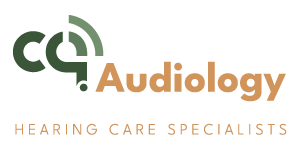Neither hearing aids nor cochlear implants are universally “better” – your best choice depends on your specific hearing loss. If you’ve got mild to moderate hearing loss with some natural hearing ability, hearing aids might work well for you. For severe to profound hearing loss, cochlear implants could be your solution. They’re different technologies with different costs, maintenance needs, and surgical requirements. Understanding these key differences will help you make the right choice for your situation.

Understanding How Hearing Aids and Cochlear Implants Work
Hearing aids and cochlear implants may seem similar, but they work in fundamentally different ways to help people with hearing loss. Hearing aids amplify sound waves, making them louder before they reach your inner ear. They’re like sophisticated microphones that capture sound, process it digitally, and deliver enhanced audio through tiny speakers.
Cochlear implants, however, bypass your damaged inner ear entirely. They convert sound into electrical signals that directly stimulate your auditory nerve. A surgically implanted device receives these signals from an external processor worn behind your ear. Unlike hearing aids, cochlear implants don’t rely on your ear’s natural hearing mechanism – they create an entirely new pathway for sound to reach your brain, making them effective even for profound hearing loss.
Key Differences Between the Two Technologies
While both devices aim to improve hearing, their fundamental differences extend far beyond how they process sound. Hearing aids amplify sounds and deliver them through your ear canal, working with your existing hearing abilities. In contrast, cochlear implants bypass damaged parts of your ear entirely, directly stimulating your auditory nerve.
You’ll find that hearing aids are removable devices that don’t require surgery, making them a less invasive option. They’re ideal if you have mild to severe hearing loss but still retain some natural hearing function. Cochlear implants, however, require surgical implementation and are typically recommended when you’re profoundly deaf or have severe hearing loss that hearing aids can’t adequately address. They’re also permanent, though their external processors can be removed as needed.
Ideal Candidates for Each Hearing Solution
Understanding who qualifies for each device is crucial for making an informed choice about hearing assistance. If you have mild to moderate hearing loss and still retain some natural hearing ability, you’re likely an ideal candidate for hearing aids. You’ll benefit most from hearing aids if your inner ear functions properly and you’re mainly experiencing sound amplification issues.
Cochlear implants are best suited if you have severe to profound hearing loss that hearing aids can’t adequately address. You might be an ideal candidate if you’ve lost most of your hearing function, especially if it’s due to inner ear damage. The best results typically occur in children who receive implants early, though adults who’ve lost hearing later in life can also benefit significantly from this technology.
Cost and Insurance Coverage Considerations
Making a decision between hearing aids and cochlear implants requires careful consideration of costs and insurance coverage.
Hearing aids typically cost between $1,000 to $4,000 per device, and you’ll likely need two. Most insurance plans and Medicare don’t cover hearing aids, though some offer partial coverage. You’ll also need to factor in maintenance costs and battery replacements.

Cochlear implants are significantly more expensive, ranging from $40,000 to $100,000 including surgery and programming. However, they’re more likely to be covered by insurance and Medicare when medically necessary. Your out-of-pocket expenses will depend on your specific insurance plan’s deductibles and coinsurance rates.
It’s essential to check with your insurance provider and explore financing options before making your final decision.
Recovery and Adjustment Period Expectations
Beyond financial considerations, patients need to know what to expect during their recovery and adjustment phase. With hearing aids, you’ll typically adapt within a few weeks, gradually increasing wearing time and adjusting to new sounds. You’ll need follow-up appointments for fine-tuning but can resume normal activities immediately.
Cochlear implants require more patience. You’ll need several weeks to heal from surgery before activation, and then months of auditory training and rehabilitation. You’ll work with audiologists and speech therapists to learn how to interpret the new signals your brain receives. It’s common to start with simple sound detection and progress to more complex listening tasks. Most recipients take 6-12 months to achieve optimal results, though you’ll continue improving beyond this timeframe.
Long-Term Care and Maintenance Requirements
While both hearing devices require ongoing care, hearing aids and cochlear implants have distinct maintenance needs. Your hearing aids will need daily cleaning, battery changes every 3-7 days, and protection from moisture. You’ll also need professional cleaning every 3-4 months and replacement every 5-7 years.
Cochlear implants require different attention. You’ll need to change the external processor’s batteries daily or charge rechargeable ones nightly. The processor must be kept dry, and you’ll need regular checkups for programming adjustments. The internal component is designed to last a lifetime, though external parts may need replacement every 5-10 years. You’ll also need to carry spare parts and batteries when traveling, as specialized technical support isn’t widely available.
